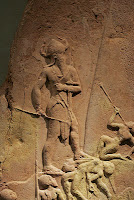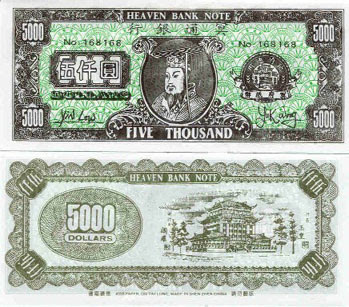Planning..
I found -on a scrap of paper tucked into my notebook- a plan I'd made some months ago telling myself that the place to start was maps, so I'm quite pleased with myself that though I'd forgotten all about that plan, I had in fact begun to research the images, icons and philosophy people used to explain the blue sky and the dark earth.
But, back to mythology for a bit!
According to Kramer, Sumerian cosmology is similar to the first part of the Hittite story of cosmology: of Kumarbi, and hence to Hesiod's Theogony.
In Sumerian myth, the beginning of 'the world' is separation between earth and sky and then a giving birth of numerous gods. The story most people know (Enuma Elish) is a latter myth. In it we get the battle between Marduck and Tiamat, which echos the older Sumerian tales of battles with the Kur.
In two out of the three Sumerian stories about the Kur, the Kur is dragon-like, in the third the Kur is a foreign, rich and powerful land.
But the one that interests me is -the story of Ninurta- because it seems to fuse into the story of Ereshkigal.
It goes like this:
There are latter stories about how Nergal becomes joint ruler of the Underworld with her.
But Eresh-ki-gal is a description, not a name. It means: great lady under earth and I'd leave it at that, except for the image from The Descent of Inanna of Ereshkigal as if giving birth:
So, what's in a name?
The story of Ninurta's battle with the Kur does not mention 'The Kur'. Kramer translates the story as a battle with the Kur; Kur, in this case is the demon called Asag, a child of earth and sky who mated with the mountain to produce stone-demon offspring.
But the Kur is the mountain, the land of forigners, in this case probably the Zagros mountains, home of peoples such as the Kassites, Guti, Assyrians, Elamites and Mitanni, who periodically invaded the Sumerian and/or Akkadian cities of Mesopotamia.
One thing really puzzles me, the dead Kur buried under a mountain of stones reminds me of Python at Delphi (pytho -meaning decay and rot) a site famous for its oracle. Apollo and Ninurta are both associated with Nergal (via plague). But why did people believe that these places: places connected to Tartarus, prison of the Titans, or rotting, or stench-filled tunnels: or connected to the god Apollo, or Orpheus...
Why did people believe that the underworld could provide useful predictions about the future?
But, back to mythology for a bit!
According to Kramer, Sumerian cosmology is similar to the first part of the Hittite story of cosmology: of Kumarbi, and hence to Hesiod's Theogony.
In Sumerian myth, the beginning of 'the world' is separation between earth and sky and then a giving birth of numerous gods. The story most people know (Enuma Elish) is a latter myth. In it we get the battle between Marduck and Tiamat, which echos the older Sumerian tales of battles with the Kur.
In two out of the three Sumerian stories about the Kur, the Kur is dragon-like, in the third the Kur is a foreign, rich and powerful land.
But the one that interests me is -the story of Ninurta- because it seems to fuse into the story of Ereshkigal.
It goes like this:
The first mention of Ereshkigal is of her being carried away by the Kur (Sumerian -Enkidu, Gilgamesh and the Netherworld) the second story is (Sumerian) The Descent of Inanna, in which she is called Inanna's 'sister' and Queen of the Underworld.
From Kramer's Sumerian myth: http://www.sacred-texts.com/ane/sum/index.htm -Ninurta, the warrior-god was (for the Sumerian's) the son of Enlil, the air-god.
Sharur (Ninurta's weapon) has set its mind against Kur. It praises Ninurta, and it urges Ninurta to attack and destroy Kur.
Ninurta sets out to do as bidden.
At first, however, be seems to have met more than his match and he "flees like a bird."
Once again, however, Sharur addresses him with reassuring and encouraging words.
Ninurta now attacks Kur fiercely with all the weapons at his command, and Kur is completely destroyed.
With the destruction of Kur, the primeval waters which Kur had held in check rise to the surface and as a result of their violence no fresh water can reach the fields and gardens. The gods of the land who "carried the pickax and the basket," that is, who had charge of irrigating the land and preparing it for cultivation, are desperate.
The Tigris waters do not rise, the river carries no good water.
"Famine was severe, nothing was produced, the small rivers were not cleaned, the dirt was not carried off, on the steadfast fields no water was sprinkled, there was no digging of ditches,
In all the lands there were no crops, only weeds grew.
Thereupon the lord sets his lofty mind, Ninurta, the son of Enlil, brings great things into being. He sets up a heap of stones over the dead Kur and heaps it up like a great wall in front of the land. These stones hold back the "mighty waters" and as a result the waters of the lower regions rise no longer to the surface of the earth. As for the waters which had already flooded the land, Ninurta gathers them and leads them into the Tigris, which is now in a position to water the fields with its overflow.
What had been scattered, he gathered,
What by Kur had been dissipated,
He guided and hurled into the Tigris,
The high waters it pours over the farmland. Behold now everything on earth
Rejoiced afar at Ninurta, the king of the land;
The fields produced much grain,
The harvest of palm-grove and vineyard was fruitful,
It was heaped up in granaries and hills;
The lord made mourning disappear from the land,
He made good the liver of the gods.
Hearing of her son's great and heroic deeds, his mother Ninmah--also known as Ninhursag and Nintu, and more originally perhaps as Ki, the mother earth--is taken with love for him; she becomes so restless that she is unable to sleep in her bedchamber. She therefore addresses Ninurta from afar with a prayer for permission to visit him and feast her eyes upon him. Ninurta looks at her with the "eye of life," saying:
"O thou lady, because thou wouldst come to a foreign land,
O Ninmah, because for my sake thou wouldst enter an inimical land,
Because thou hast no fear of the terror of the battle surrounding me,
Therefore, of the hill which I, the hero, have heaped up,
Let its name be Hursag (mountain), and thou be its queen."
Ninurta then blesses the Hursag that it may produce all kinds of herbs, wine and honey, various kinds of trees, gold, silver, and bronze, cattle, sheep, and all "four-legged creatures." After this blessing of the Hursag, he turns to the stones, cursing those which have been his enemies in his battle with Kur and blessing those which have been his friends; this entire passage, in style and tone, not in content, is very reminiscent of the blessing and cursing of Jacob's sons in the forty-ninth chapter of Genesis. The poem closes with a long hymnal passage exalting Ninurta.
A modern translation can be read here: http://etcsl.orinst.ox.ac.uk/cgi-bin/etcsl.cgi?text=t.1.6.2&charenc=j#
There are latter stories about how Nergal becomes joint ruler of the Underworld with her.
But Eresh-ki-gal is a description, not a name. It means: great lady under earth and I'd leave it at that, except for the image from The Descent of Inanna of Ereshkigal as if giving birth:
The kurgarra and the galatur heeded Enki's words. They set out for the underworld.Ninhursag isn't giving birth, nor is Ereshkigal, but in both cases their's is a connection with the productive quality of earth. There are two themes in the Persephone story: Abduction (sacrifice) and control over the fertility of the land, the stories of Ereshkigal (abduction and Inanna's Descent) both have those themes.
Like flies, they slipped through the cracks of the gates.
They entered the throne room of the Queen of the Underworld.
No linen was spread over her body.
Her breasts were uncovered.
Her hair swirled around her head like leeks.
Ereshkigal was moaning:
"Oh! Oh! My inside!"
They moaned:
"Oh! Oh! Your inside!"
She moaned:
"Ohhhh! Oh! My outside!"
They moaned:
"Ohhhh! Oh! Your outside!"
She groaned:
"Oh! Oh! My belly!"
They groaned:
"Oh! Oh! Your belly!"
She groaned:
"Oh! Ohhhh! My back!"
They groaned:
"Oh! Ohhhh! Your back!"
So, what's in a name?
The story of Ninurta's battle with the Kur does not mention 'The Kur'. Kramer translates the story as a battle with the Kur; Kur, in this case is the demon called Asag, a child of earth and sky who mated with the mountain to produce stone-demon offspring.
But the Kur is the mountain, the land of forigners, in this case probably the Zagros mountains, home of peoples such as the Kassites, Guti, Assyrians, Elamites and Mitanni, who periodically invaded the Sumerian and/or Akkadian cities of Mesopotamia.
One thing really puzzles me, the dead Kur buried under a mountain of stones reminds me of Python at Delphi (pytho -meaning decay and rot) a site famous for its oracle. Apollo and Ninurta are both associated with Nergal (via plague). But why did people believe that these places: places connected to Tartarus, prison of the Titans, or rotting, or stench-filled tunnels: or connected to the god Apollo, or Orpheus...
Why did people believe that the underworld could provide useful predictions about the future?

